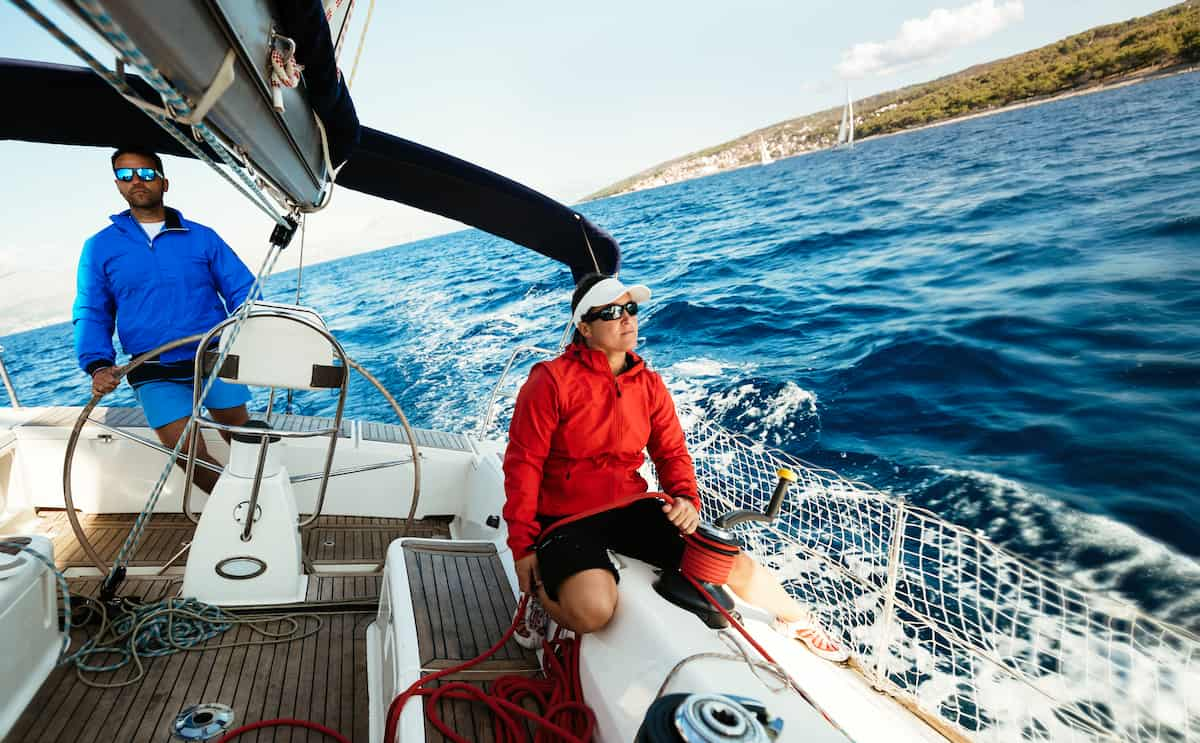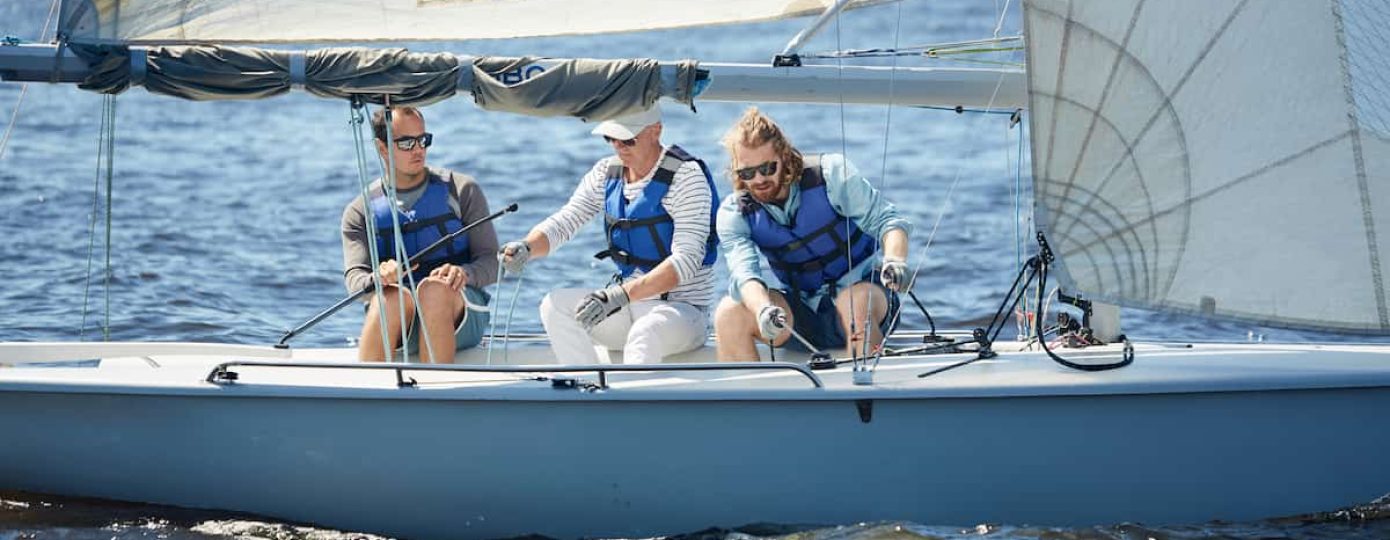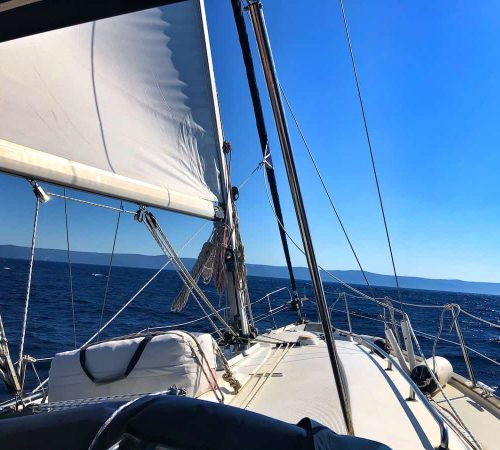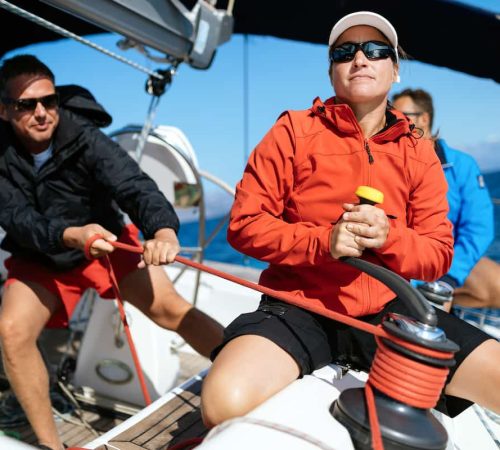The self-tacking jib is a very useful system aboard a sailboat: thanks to it, the sail can be maneuvered much more easily, changing the tack conveniently and quickly without the need to caulk or let go of the sheet. Let’s take a detailed look at what it is, why it is useful and, most importantly, why it is increasingly in demand within sailing cabin cruisers even when you decide to rely on a sailboat charter to sail the seas on an exciting summer vacation.
What is the self tacking jib
It is a sail plan, rather narrow and long, with a low ashlar to reduce the surface area and take up less space. As the name implies, it veers from itself.
The new tonnage rules penalize jibs that are too large; therefore, this type of jib is much more manageable than its competitors.
The sheet point, located toward the inside of the jib, wraps around the wind perfectly, improving overall performance. However, speed is reduced in winds less than ten knots, as the leech remains too open when leaving the sheet.
In fact, the use of such a jib is recommended from 12 to 25 knots of apparent wind.

The use of the self-tacking jib in sailing.
The self-tacking jib in sailing can be used with narrow to wide windward, not having a wide range of use.
The mainsail is uncovered; therefore, it is a useful sail only in boats equipped with fractional rigging where, precisely, it is the mainsail (large and luffed) that gives the greatest propulsive force to the craft, increasingly reducing the role of the genoa, which, for this very reason, in newer boats is smaller in size.
The jib, in this case, is connected to a single sheet and the carriage is free to move on the rail. In addition, the sail is smaller than the bow triangle: thus, it will not be necessary to have another person to tack and you will be able to steer the boat alone, maneuvering better even in situations that require maximum control.
A system that is perfectly suited to many types of vessels
Sailboats with self-tacking jibs were traditionally workboats but, at present, can also be found in standard cabin cruisers.
Examples include the Bénéteau shipyard in France, Island Packet in the United States, the Hanse shipyard in Germany, Southerly in the United Kingdom, and the luxurious Wally shipyard.
Even racing boats such as, for example, the schooner America increasingly possess this type of jib, so as to make handling smoother and racing more and more exciting.
Being an excellent compromise between ease of use and performance, the self-tacking jib has also proven ideal for cruising boats.
Sailboats with self-tacking jib: increasingly popular
In conclusion, it is easy to see that the self-tacking jib in a sailboat makes it easy to steer the craft: no need to handle extensive headsails or even touch the body.
Precisely because of its great convenience, at the practicality of use and to the freedom which leaves the skipper, is a model increasingly loved by both those who build, those who buy sailboats, and those who rely on an experienced sailboat rental as Spartivento Charter which always has many different boats in its fleet, always able to meet every need and demand.











